 I don’t know how many stereo systems are sitting unused in people’s basements and attics; but I’d guess a gazillion or so, give or take a million. That’s a pity, because it wouldn’t take much to update them. Just connect a streaming DAC like the new Bluesound Node ($549, all prices in USD), and that old system is ready to stream music from the internet, play digital music from an external drive, play soundtracks from a connected HDTV, and perform other 21st-century audio tricks.
I don’t know how many stereo systems are sitting unused in people’s basements and attics; but I’d guess a gazillion or so, give or take a million. That’s a pity, because it wouldn’t take much to update them. Just connect a streaming DAC like the new Bluesound Node ($549, all prices in USD), and that old system is ready to stream music from the internet, play digital music from an external drive, play soundtracks from a connected HDTV, and perform other 21st-century audio tricks.
There’s probably a gazillion other systems, in living rooms and elsewhere, which are only being used for playing physical media—a device like the Node could equip these systems for the streaming era. And the Node can serve as a perfect companion for a pair of active or powered speakers that lack streaming capability.
Announced last spring, the new Node offers several upgrades over the Node 2i streamer it replaced. These include a faster processor; an upgraded 32-bit/384kHz DAC said to deliver “notably improved performance”; additional hardware controls on the top panel (more on this later); and an HDMI eARC port. The latter means you can adjust volume using the TV remote control when playing audio from an HDTV with HDMI ARC connectivity, so you don’t have to fumble for a second remote or open an app when you’re watching TV.
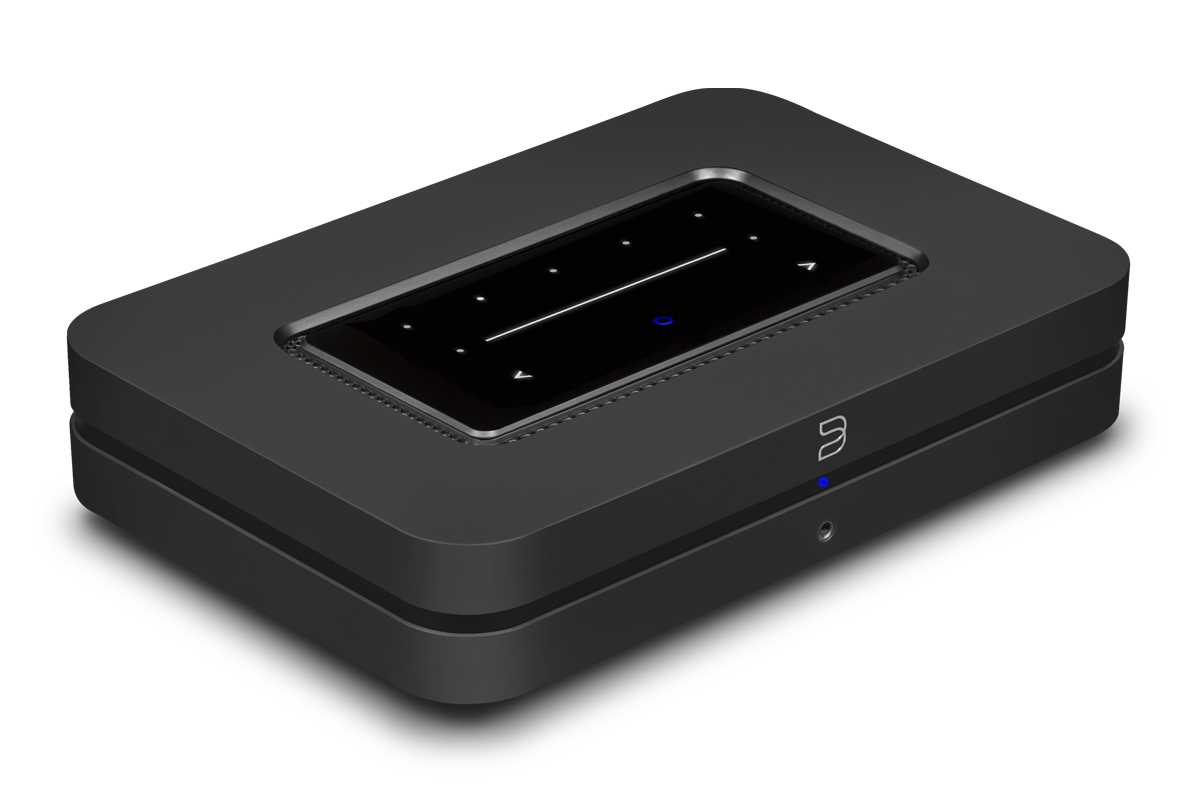
Otherwise, the Node’s feature set is virtually identical to the Node 2i’s, which is to say extensive. Like all Bluesound products (and a growing number of components from the brand’s stablemate NAD and third-party licensees such as DALI and Roksan), the Node is based on the BluOS software platform developed by Lenbrook Industries, Bluesound’s parent company. BluOS has an extensive range of capabilities:
- Multiroom music—using the BluOS Controller app, available for Android, iOS, macOS, and Windows, listeners can stream digital music over a home network to as many as 64 zones.
- Hi-rez support—BluOS supports high-resolution playback to 24/192; BluOS components also have full MQA decoding and rendering capability.
- Wide support of streaming services—the BluOS app has integrated support for dozens of streaming services, including several that offer lossless and high-resolution music.
- Apple AirPlay2 support—you can stream audio to any BluOS component from an iPhone, iPad, Mac, or an iTunes library.
- Spotify Connect and Tidal Connect—you can cue up music on these streaming services, then shift playback to the Node, or any other BluOS component.
BluOS also features Apple Siri, Amazon Alexa, and Google Assistant voice control (although I don’t find voice control very useful for music playback) and compatibility with smart home platforms such as Crestron and Lutron. And, like other BluOS-enabled components, the Node is Roon Ready.
Inside and out
Measuring 8.7″W × 1.8″H × 5.7″D and weighing 2.4 pounds, the Node is available in black or white satin finishes. An indented black line traverses the front and sides; in the middle is an LED that glows and flashes in different colors to indicate the status of the system. On the front, above that line, is the Bluesound logo in a contrasting color—white on the black version, black on the white version. Below that line is a 3.5mm headphone jack.
One of the most visible differences between the Node 2i and new Node is the touch panel on top, which lights up as you approach it. As on previous versions of the Node, you can use the touch panel to adjust the volume, skip tracks forward and backward, and pause or resume playback. The new Node adds five preset buttons that allow one-touch access to favorite playlists and internet radio stations.
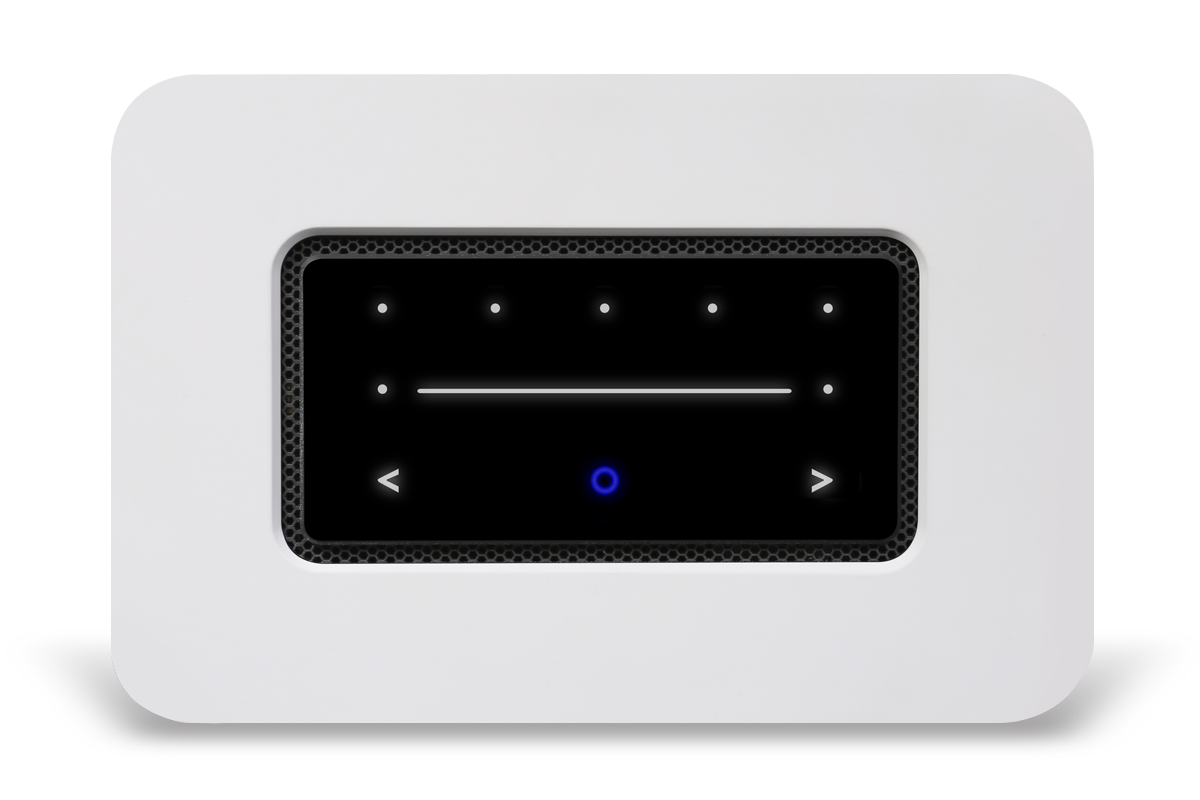
In the companion BluOS app, you can store up to 40 internet radio stations or playlists as presets, and access them from My Presets on the main menu. Now, the first five of these presets can be accessed from the touch panel, so you can get a quick musical fix without having to open the BluOS app. If you have technophobic music lovers in your household, they’ll really like that feature.
On the far left of the rear panel is a pair of line-level RCA analog output jacks for connection to an amplifier or a pair of powered or active speakers; and next to them an RCA output jack for a subwoofer. Many budget components have what their makers claim to be sub outputs; but usually they are just full-range pre-outs, with no low-pass filter.
By default, the Node’s subwoofer jack similarly outputs full-range audio. But you can also set a crossover frequency in the BluOS app, over a range of 40 to 200Hz. This doesn’t just implement a low-pass filter for the sub; it also implements a high-pass filter for the analog output jacks. In this way, the main speakers are freed from having to reproduce deep bass, which almost always translates to improved clarity in the mid- and upper bass—and in the lower midrange, as well.
The Node can also be paired to a Bluesound Pulse Sub+ wireless subwoofer ($749), and the BluOS app can be used to implement low- and high-pass filters for this application.
To the right of the subwoofer output jack is an RCA coaxial S/PDIF output, and to its right a mini optical S/PDIF output. With these digital outputs, the Node can be used as a streamer, for connection either to an external DAC, or another component with digital inputs, such as an A/V receiver.
Further to the right is a combined TosLink/3.5mm analog stereo mini input jack, for connecting an analog or digital source component; a 12V trigger output for automatically powering up a connected component, such as an amplifier or subwoofer, when the Node is turned on; and an input for an infrared receiver for remote control.

Moving further right, we find a Gigabit Ethernet port for a wired connection to your home network, and below it a USB Type-A port for connecting an external drive containing music files. Beside those inputs is the HDMI eARC input, and then a two-prong power inlet.
While the native resolution of the Texas Instruments PCM5242 DAC used in the Node is 32/384, like all BluOS devices, the Node only accepts digital streams up to 24/192. The Node also has two-way Bluetooth 5.0 capability with support for the advanced aptX HD codec. You can stream audio to the Node from a smartphone or other Bluetooth device, and you can stream music from the Node to a pair of Bluetooth headphones.
Setup and software
Like most components these days, the Node comes with a rudimentary Quick Setup Guide, which should provide most users with the information they need to get started. For a deeper dive, it’s worth downloading the full manual. Another worthwhile resource is Bluesound’s “Getting Started with BluOS” web page, which will help new users get the most out of the system’s many functions.
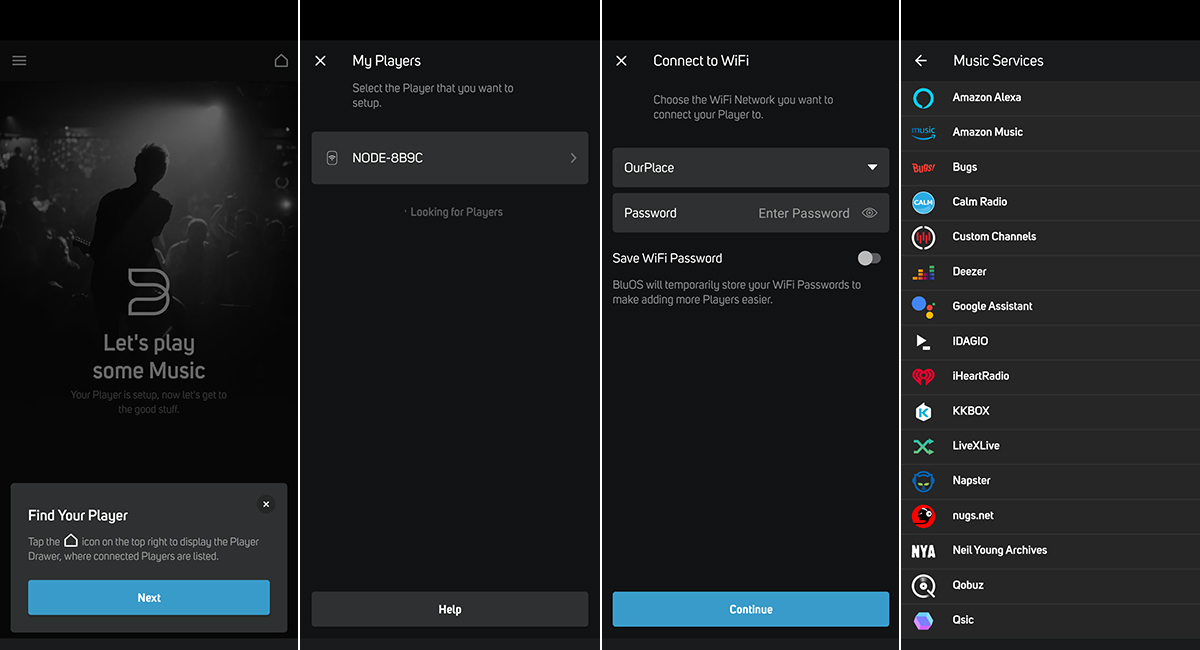
For users new to BluOS, the first step is to download the BluOS Controller app, and then to get the Node connected to your home network. The Quick Setup Guide includes QR codes that can take you directly to the download location on the Apple App Store or Google Play. I already had the BluOS Controller app on my Google Pixel 4a 5G smartphone, so I launched the app, and chose Add a Player in the app’s Players drawer. BluOS found the Node, asked me to choose the Wi-Fi network and enter the password, and the Node connected to my Wi-Fi network. BluOS then updated the Node’s firmware, and I was good to go. Easy-peasy!
If you want to use the BluOS Controller app to play music from streaming services, tap Music Services in the app’s Navigation drawer. You’ll see a list of all the services supported by BluOS. Select the one you want, then enter your username and password when prompted. Again, dead easy.
The process is different for Spotify subscribers. After you’ve used BluOS to connect the Node to your home network, just cue up the music you want in the Spotify app and tap the Devices Available icon in the Now Playing screen, then choose the Node as your playback device. Tidal subscribers can use the Tidal client in the BluOS app. But they can also cue up music in the Tidal app, and then shift playback to the Node using Tidal Connect. iPhone and iPad users can stream music to the Node by tapping the AirPlay icon in the Now Playing window of their music app, or in the iOS Control Center, and choosing the Node as the playback device.
I connected the Node to the RCA inputs of my Elac Navis ARF-51 active speakers ($5399.96/pair) using AudioQuest Mackenzie interconnects. For most of my listening, I used the BluOS app to stream music from Qobuz. For movie soundtracks, I connected the Node’s HDMI eARC input to the HDMI ARC port of the One Connect set-top box for my Samsung UN55LS003 55″ Frame TV. The TV automatically detected the Node and set it as the audio output device, so I was able to route audio to the Node from the TV and control volume with the TV remote.
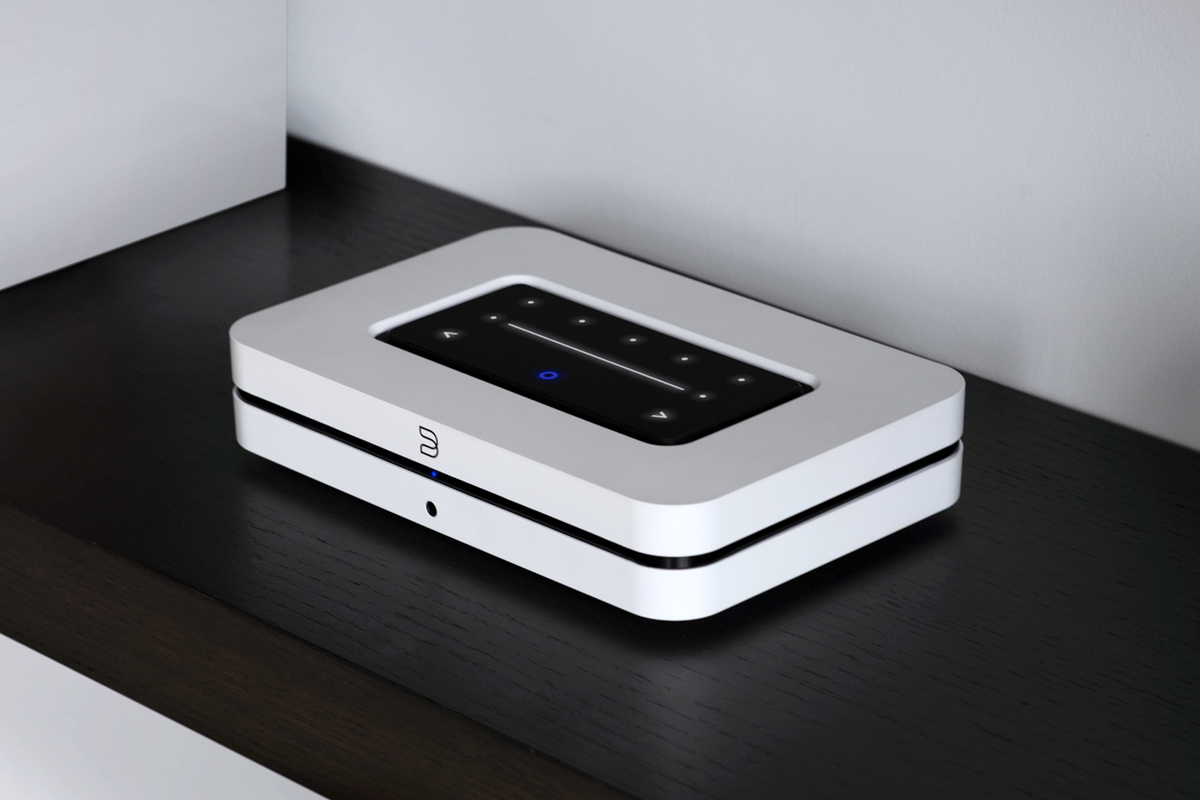
Listening and comparisons
In a recent SoundStage! Real Hi-Fi video, SoundStage! Network founder and publisher Doug Schneider opined that a pair of well-designed $1000 stand-mounted loudspeakers will deliver “80%, if not more, of the performance of similarly sized and configured speakers of any price.” To make his point, Doug compared two speakers by the French brand Focal, the Chora 806 ($990/pair) and Sopra No1 ($9990/pair). Diego Estan, who reviewed both speakers for the SoundStage! Network, told Doug that the Chora 806 “comes scarily close” to the Sopra No1.
I felt much the same way about the Bluesound Node after comparing it with some more expensive streaming DACs. The Node sounded ever-so-slightly homogenized and two-dimensional compared to my NAD C 658 ($1649). But there was nothing about its sound that interfered with my enjoyment of whatever music I was hearing.
I connected the C 658 to the Elac speakers’ balanced inputs with Benchmark Media Studio&Stage XLR cables. This made comparisons easy, as all I had to do was switch between the RCA and XLR inputs on the Elac speakers. I made sure to disable Dirac Live room correction on the C 658, and matched levels of the two source components using pink noise and a sound-pressure meter.
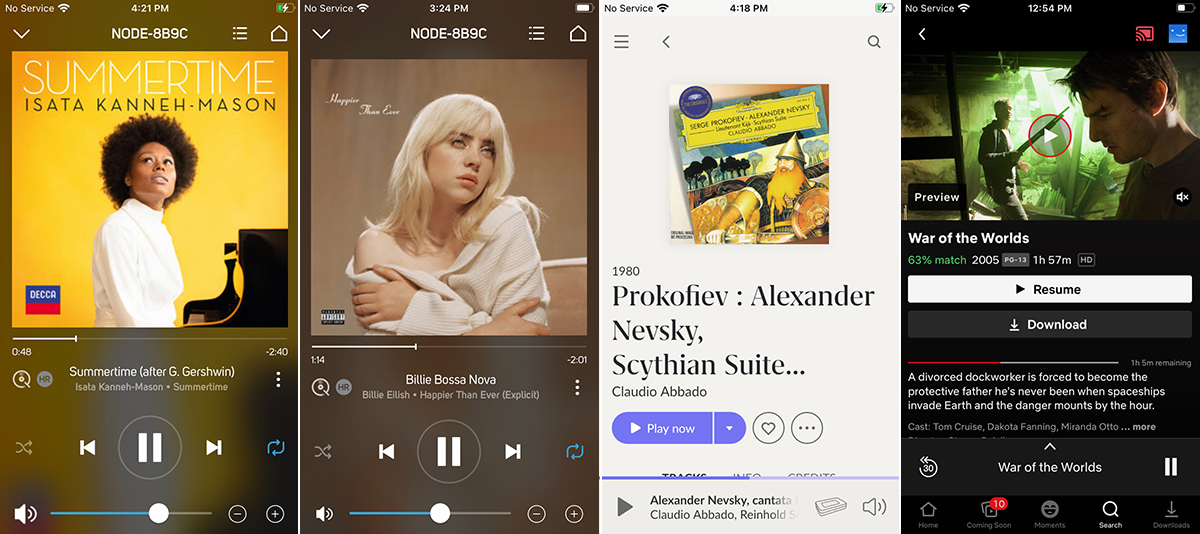
I loved the way the Node reproduced Isata Kanneh-Mason’s new album of American music for solo piano, Summertime (24-bit/96kHz FLAC, Decca/Qobuz). On Earl Wild’s composition based on George Gershwin’s “Summertime,” Kanneh-Mason uses the sustain pedal liberally, but even so, individual notes in her rolled chords were beautifully delineated, without being spotlit. The Node delivered Kanneh-Mason’s explosive staccato notes in Wild’s virtuosic take on “I Got Rhythm” with impressive ease. While the Node did a fine job conveying the ambience of the Philharmonic Hall in Liverpool, England, the image stayed on the plane between the two speakers.
Through the NAD C 658, I heard a little more of Kanneh-Mason’s subtle dynamic shadings in “Summertime (after G. Gershwin).” On “I Got Rhythm (after G. Gershwin),” Kanneh-Mason’s rapid-fire notes sounded a little faster, and also a tad smoother. And through the NAD preamp, her instrument sounded more powerful and a little larger. The image had more depth, and there was more space around the notes, so that I was more aware of the way the sound of her instrument decayed into the concert hall.
But these differences were tiny. Even though the C 658 costs three times as much as the Node, the Node’s sonic performance came “scarily close” to the C 658’s, to borrow Diego’s phrase. Of course, the C 658 is a more richly featured product. It has a moving-magnet phono stage and Dirac Live room correction, neither of which the Node offers, and is equipped with many more inputs and outputs.
“Billie Bossa Nova” from Billie Eilish’s Happier Than Ever (24/44.1 FLAC, Darkroom-Interscope/Qobuz) sounded glorious through the Node and the Elac Navis active floorstanders. The instrumental accompaniment by Finneas O’Connell, Eilish’s producer and brother, were spread over a vast soundstage: a strummed electric guitar moving across the front, pulsating bass notes in the center rear, electronic drum effects in the left rear, synth chords in the right rear—every element was precisely located, with plenty of space separating each one.
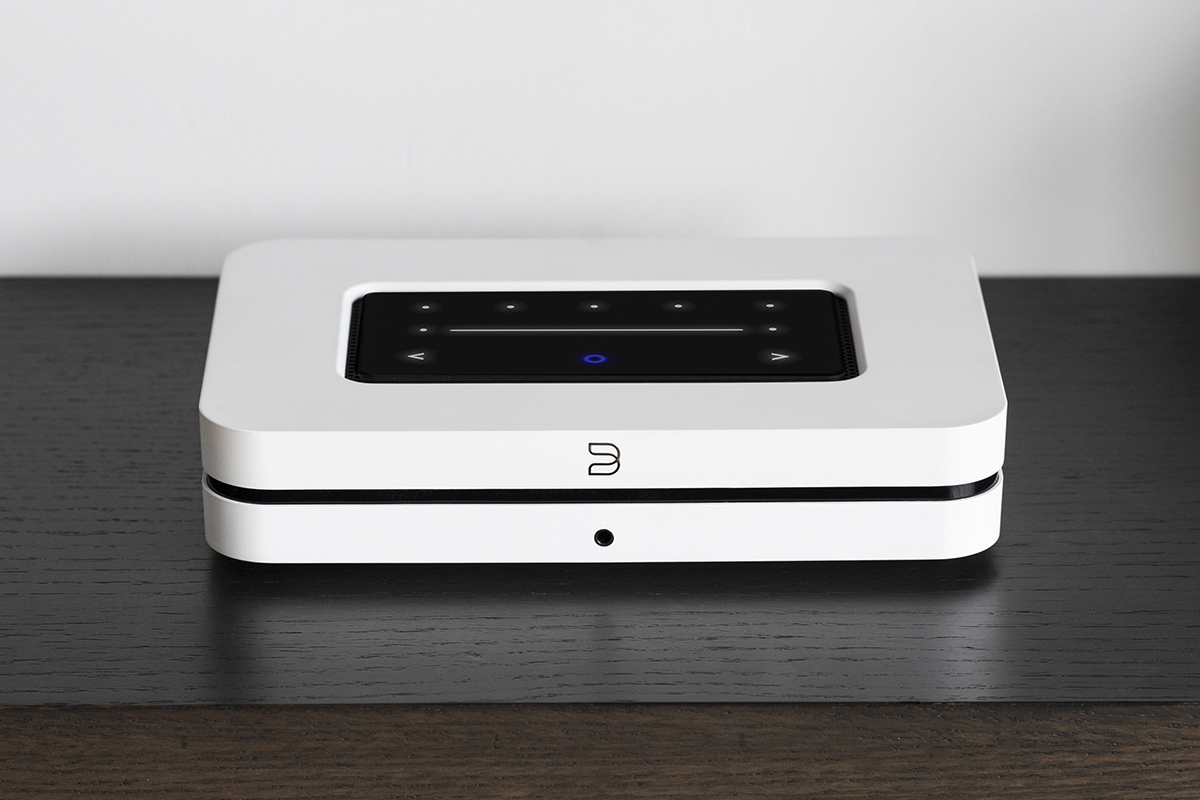
Eilish’s voice, in the center of the soundstage just behind the speaker plane, was every bit as satisfying. I loved the way the Node and the Elac speakers presented subtle but important details, such as the way Eilish stretches out words and phrases to heighten their meaning. But her whispery delivery in the choruses had a slightly papery edge.
Played through the NAD C 658, that papery edge in the whispery choruses was less pronounced. And Eilish’s expressive word-painting in the verses—the way she stretches out the end of some words, and adds little quavery accents—came through a touch more clearly with the NAD. The soundstage had similar scale through both components, but there was more space around Finneas’s instruments and Eilish’s voice through the NAD. The Node was a tad homogenized by comparison. While these differences were clearly audible, they were hardly night-and-day.
To determine how the Node would stack up against a more expensive DAC and streamer, I streamed Claudio Abbado’s 1979 recording of Sergei Prokofiev’s secular cantata Alexander Nevsky with the London Symphony Orchestra and Chorus (16/44.1 FLAC, Deutsche Grammophon/Qobuz) via Roon to the Node, and then to exaSound Audio Design’s Sigma streamer ($750) and e32 Mark II DAC-preamp (discontinued, $2499 when available). The exaSound DAC was connected to the Elacs’ XLR inputs with a pair of 2m Argentum Acoustics Mythos interconnects.
Through the Node, I could sense the exact amount of pressure the violinists were putting on their bows in the brooding, mysterious opening to the fifth movement, “The Battle on the Ice.” The bowed cellos, announcing the approach of the invading Teutonic knights, had wonderful rosiny texture. But the dramatic middle part of the movement, where Alexander’s rag-tag army fights the German invaders (singing a nonsense chorus in Latin) sounded a bit compressed. And while the Node created a wide soundstage with very good lateral imaging, front-to-back layering was less than ideal—everything seemed to be happening on the plane between the speakers. The wild battle scene sounded somewhat compressed.
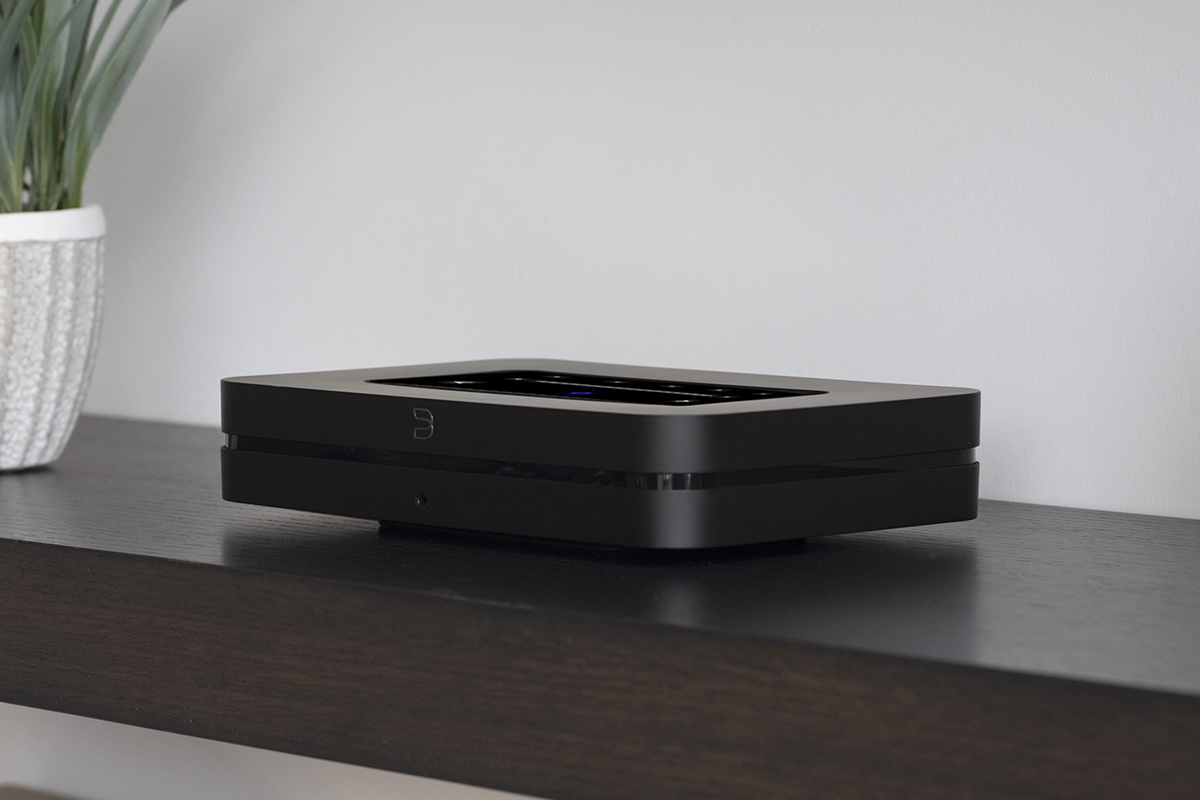
Not surprisingly, “The Battle on the Ice” sounded better through the exaSound combo. There was more space around the instruments in the brooding introduction. The sound was smoother—by comparison, the violins were a tad steely through the Node. In the battle scene, dynamics scaled up and down more effortlessly, with no evidence of the compression I noticed with the Node. The big, rolling timpani and bass drum sounded deeper and more threatening. The spatial presentation was more transparent, with better front-to-back layering.
I can’t say the Node came “scarily close” to the exaSound combo, but it was in no way embarrassed by the comparison. In any event, you would expect a DAC-streamer combo that costs $3249 to sound better than a streaming DAC that costs $549.
But here’s the thing. When you’re ready to upgrade, you can just use the Node as a streamer, and connect its optical or coaxial S/PDIF output to the corresponding input of the DAC of your choice. I connected the Node to the exaSound DAC’s coaxial S/PDIF input, and compared it to the Sigma, which was connected to the DAC’s USB input. Was the Sigma a tad more transparent? Did it have slightly better front-to-back layering? Maybe so, but perhaps it was my imagination. Here’s what I do know: whatever sonic differences I heard, they were not worth worrying about. What’s more significant is the feature set of the products: the Node’s rich, stable BluOS software platform, versus the Sigma’s support for higher-resolution formats (up to 32/384 PCM and DSD256).
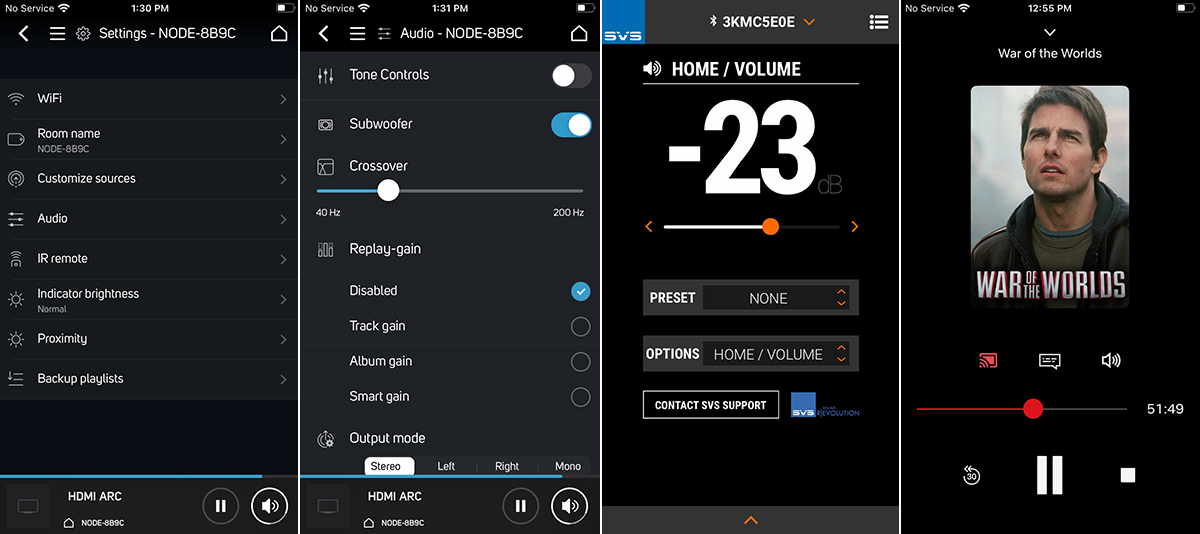
To check out the Node’s subwoofer output, I streamed Steven Spielberg’s 2005 remake of War of the Worlds from Netflix to my Frame TV via its One Connect set-top box, whose HDMI ARC port was connected to the Node’s HDMI eARC input. If you’re using the Node with an integrated amp, you probably won’t use the Node’s subwoofer output, because the sub won’t be available for sources connected to your amp. But if you’re using the Node with powered or active speakers, you’ll find the subwoofer controls in the BluOS app very useful.
Played through the Node and my Elac active floorstanders, the movie’s dramatic Foley effects weren’t as immersive as they’d have been with a 5.1 surround system—how could they have been? Nonetheless, the sounds of the alien machines, explosions, and falling debris were immensely satisfying—huge and powerful, with a soundstage that extended well beyond the boundaries of my speakers.
After watching the movie all the way through, I connected my SVS 3000 Micro subwoofer ($799.99) to the Node’s subwoofer port, enabled the subwoofer in the Audio menu of the BluOS app, and set the crossover frequency to 80Hz. I then played test tones at 30, 50, and 200Hz, to help me match the sub’s level to the main speakers.
The sub made a major improvement. Those big Foley effects sounded much more powerful, and also better defined. The bass was less boomy, and extended deeper. And with the Elacs no longer having to produce deep bass, the sound higher in the audioband was slightly smoother, and noticeably less compressed, so that the effects were even more dramatic. There are many things I appreciate about the BluOS platform, and one of them is that it implements both low- and high-pass filters when a subwoofer is used.
Conclusion
As the foregoing makes clear, the new Bluesound Node delivers amazing sound quality for its modest asking price.
But that’s not what impressed me most about the Node. In previous reviews, I’ve expressed my admiration for the rich, robust BluOS platform, and my experience with the Node solidifies this opinion further. Throughout my testing, I experienced no surprises or hiccups—everything just worked.
BluOS is a rich platform, with many functions, but it’s also well designed. Users who are new to streaming can expect to face a learning curve. What they won’t experience is tear-your-hair-out frustration.
In short, the Node is an affordable, painless way to add streaming and other 21st-century capabilities to a legacy audio system. Highly recommended.
. . . Gordon Brockhouse
Associated Equipment
- Active loudspeakers: Elac Navis ARF-51.
- Interconnects: AudioQuest Mackenzie (RCA, 2m and 5m), Benchmark Media Studio&Stage (XLR, 6′ and 15′), Argentum Acoustics Mythos (XLR, 2m).
- Digital links: AudioQuest Cinnamon (USB, 2m), AudioQuest Carbon (coaxial S/PDIF, 2m).
- Streaming DAC-preamp: NAD C 658; exaSound Audio Design e32 Mark II DAC and Sigma streamer.
- Display: Samsung UN55LS003 HDTV “The Frame” with Google Chromecast Ultra 4K streaming media player.
- Subwoofer: SVS 3000 Micro.
- Control devices: Apple iPhone 8 and Google Pixel 4a 5G smartphones; HP Spectre x360 Convertible 13 laptop PC.
- Network: Google Wifi four-node mesh network.
Bluesound Node Streaming DAC-Preamplifier
Price: $549.
Warranty: One year, parts and labor.
Bluesound International
Lenbrook Industries Ltd.
633 Granite Court
Pickering, Ontario L1W 3K1
Canada
Phone: (905) 831-6333
Website: www.bluesound.com




